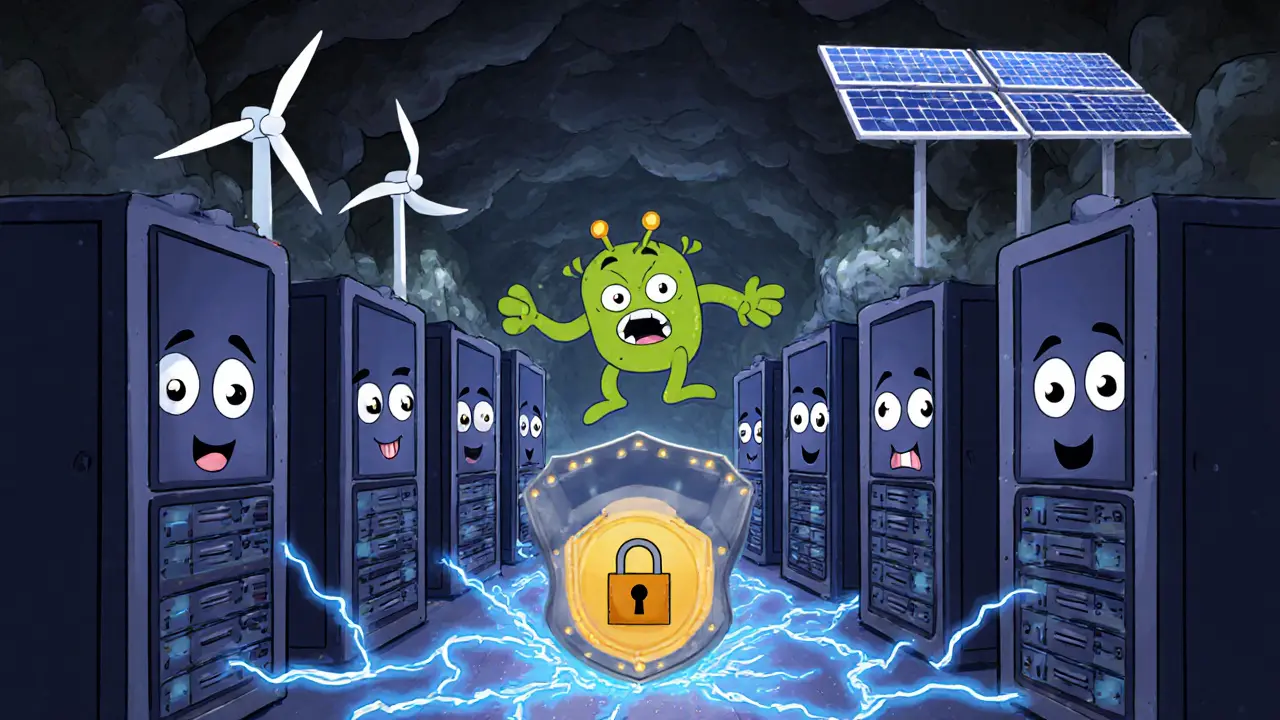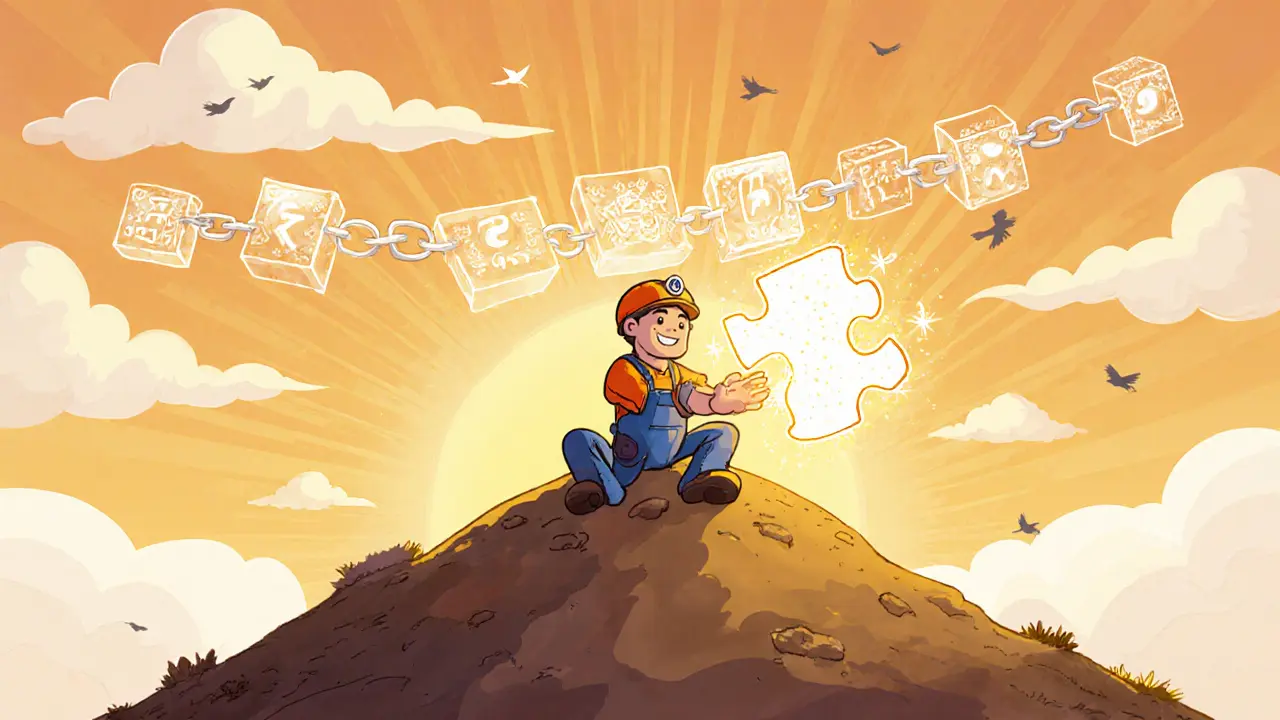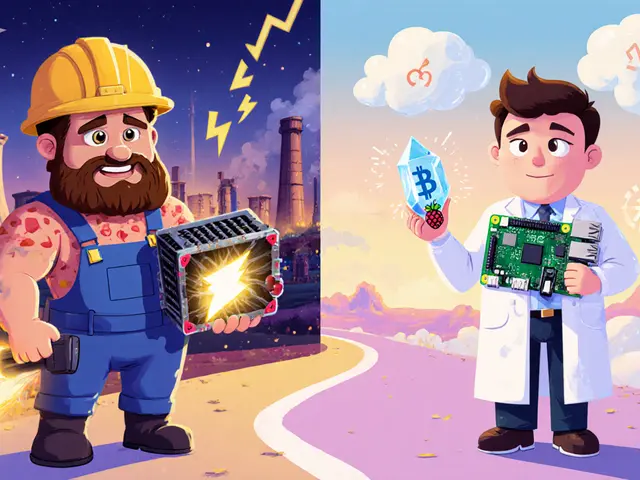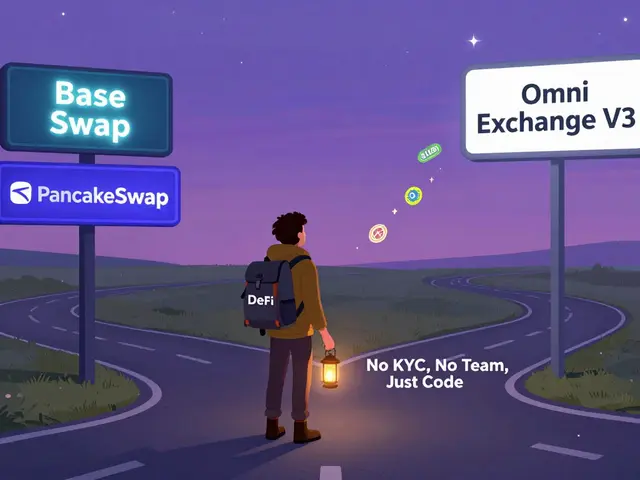Proof of Work Calculator
Enter values and click calculate to see profitability analysis
Key Takeaways
- Proof of Work secures blockchains by requiring miners to solve hard cryptographic puzzles.
- The puzzle is easy to verify but costly to find, creating a natural economic barrier against attacks.
- Bitcoin remains the flagship PoW network, but energy use and scalability are hot topics.
- PoW and Proof of Stake differ in security model, energy profile, and transaction speed.
- Modern mining has shifted to specialized ASIC hardware and increasingly relies on renewable power.
What is Proof of Work?
Proof of Work is a cryptographic consensus mechanism that forces participants to perform a measurable amount of computational effort before they can add a new block to a blockchain. The concept first appeared in academic papers on spam prevention in the early 1990s, but it became famous when Bitcoin adopted PoW as its core consensus algorithm in the 2008 whitepaper. Since then, PoW has powered thousands of coins, from Litecoin to Monero.
How PoW Works: The Mining Process
At its heart, PoW asks a miner a node that assembles pending transactions and tries to solve a cryptographic puzzle to create a new block. The puzzle is built around the SHA-256 a hash function that turns any input into a fixed‑size 256‑bit string output. A miner repeatedly hashes the block header combined with a changing nonce until the resulting hash is lower than the network’s current target.
The difficulty of finding such a hash is adjusted every 2,016 blocks (about two weeks) so that, on average, one block is found roughly every ten minutes. This difficulty adjustment algorithm recalibrates the target based on total network hashrate keeps block times stable no matter how many miners join or leave.
When a miner finally hits a valid hash, the new block is broadcast. Other nodes instantly verify the hash-an operation that takes milliseconds-and the block is added to the chain. The successful miner receives a block reward (currently 6.25BTC) plus any transaction fees, creating a direct financial incentive to keep the network honest.

Security Benefits: Why PoW Resists Attacks
PoW solves the classic double‑spending problem by making it economically prohibitive to rewrite history. To change a past block, an attacker would need to control more than 50% of the total hashrate the combined computational power of all miners. With Bitcoin’s current hashrate exceeding 600EH/s, that would require spending hundreds of billions of dollars on hardware and electricity-a risk most participants can’t justify.
The model also provides Byzantine Fault Tolerance: even though nodes are anonymous and may act selfishly, the puzzle ensures that only the cheapest, most powerful participants can propose blocks, aligning economic interest with network security.
Energy Use and Sustainability Concerns
Because every hash attempt consumes power, PoW networks draw massive electricity. The Cambridge Bitcoin Electricity Consumption Index estimates Bitcoin uses over 121TWh per year-roughly the same as Argentina. Critics argue this level of consumption is unsustainable, especially as regulators worldwide tighten ESG‑related policies.
However, the mining industry is adapting. Companies like Marathon Digital Holdings report that more than 68% of their mining operations now run on renewable sources. Emerging research also explores “Proof of Useful Work,” where miners channel their cycles into scientific calculations instead of wasteful hashes.
PoW vs PoS: A Side‑by‑Side Look
| Aspect | Proof of Work (PoW) | Proof of Stake (PoS) |
|---|---|---|
| Security Model | Economic cost of hardware & electricity; 51% attack requires massive hashrate. | Economic stake; attacker must own >50% of tokens, costing market‑cap value. |
| Energy Consumption | High - >120TWh/yr for Bitcoin. | Low - < 0.01% of PoW energy use. |
| Transaction Throughput | 4‑7 TPS, 10‑minute block time. | 15‑30 TPS, 12‑second block time (varies by chain). |
| Hardware Requirements | ASIC miners or GPUs; high upfront cost. | No specialized hardware; regular computers suffice. |
| Decentralization | Potential centralization in mining pools. | Depends on token distribution; can be more evenly spread. |
Real‑World PoW Implementations
Besides Bitcoin, several other networks still rely on PoW:
- Litecoin - uses Scrypt hashing, offering slightly faster block times.
- Monero - focuses on privacy with RandomX algorithm.
- Ethereum Classic - maintains original Ethereum PoW after the main chain switched to PoS.
Each chain tweaks the underlying algorithm to balance ASIC resistance, speed, and privacy, but the core principle-solve a hard puzzle, get rewarded-remains unchanged.

Setting Up a Mining Operation: What You Need to Know
Starting a mining venture today means buying an ASIC Application‑Specific Integrated Circuit designed solely for mining such as the Bitmain Antminer S19 Pro (110TH/s, ~3.25kW). A single unit can cost several thousand dollars, and a modest farm of 50 machines quickly hits the $50,000 entry barrier.
Key cost drivers:
- Capital expense: hardware purchase and rack setup.
- Electricity: accounts for 60‑70% of ongoing expenses.
- Cooling: each ASIC produces ~3,500BTU/hr; adequate ventilation or immersion cooling is essential.
- Network bandwidth: a stable 50Mbps line prevents stale shares.
- Regulatory compliance: many jurisdictions now require environmental disclosures.
New miners also join a mining pool to smooth out payouts. Pools aggregate hash power, share block rewards proportionally, and charge a small fee (typically 1‑2%). While pools improve cash‑flow, they also concentrate power, a point of criticism among decentralization purists.
Future Outlook: Evolution, Upgrades, and New Ideas
PoW isn’t standing still. The 2021 Taproot upgrade introduced Schnorr signatures and MAST, shaving a few percent off the average energy per transaction without compromising security. Meanwhile, large miners are shifting toward green power-hydropower in the Pacific Northwest, solar farms in Texas, and even waste‑heat recovery projects.
Academic circles are experimenting with “Proof of Useful Work,” where hash cycles solve real‑world problems like protein folding or climate modeling. Though still experimental, such proposals could redefine the value proposition of PoW beyond mere security.
Regulators remain a wildcard. The EU’s MiCA rules now force PoW projects to publish annual energy‑use reports, and several US states have placed temporary bans on carbon‑intensive mining. Companies that adapt-by moving to renewables or diversifying into staking services-are likely to survive the tightening landscape.
Quick Recap
In short, Proof of Work is a tried‑and‑tested way to achieve consensus without a central authority. It trades massive energy use for unmatched security, making it ideal for digital gold‑type assets like Bitcoin. As the ecosystem evolves, miners, developers, and regulators will shape PoW’s next chapter.
Frequently Asked Questions
How does Proof of Work prevent double spending?
Each transaction is locked inside a block that can only be added after a miner solves a hard puzzle. Changing a past transaction would require re‑solving every subsequent block, which is computationally infeasible without owning >50% of the network’s hash power.
Why is PoW considered less environmentally friendly than PoS?
PoW miners constantly run high‑power hardware to guess hashes, consuming large amounts of electricity. PoS, by contrast, selects validators based on token stake, which needs only minimal computational resources.
Can I mine Bitcoin with a regular PC?
No. Bitcoin mining now requires specialized ASIC devices. A typical PC would never compete with the tera‑hash rates that modern miners deliver.
What is a mining pool and why join one?
A mining pool combines the hash power of many miners and splits rewards proportionally. It smooths income, reducing the variance of receiving the full block reward only once in a long time.
Is Proof of Work going to disappear?
Unlikely. PoW’s track record, especially Bitcoin’s, shows strong security. However, many new projects prefer PoS for efficiency, and PoW may become a niche reserved for high‑value store‑of‑value assets.








Nick Carey
October 10, 2025 AT 10:37Laura Herrelop
October 10, 2025 AT 12:46Nisha Sharmal
October 10, 2025 AT 19:47Karla Alcantara
October 10, 2025 AT 23:59Jessica Smith
October 11, 2025 AT 22:09Petrina Baldwin
October 12, 2025 AT 16:18sundar M
October 13, 2025 AT 11:42Sonu Singh
October 13, 2025 AT 15:16Peter Schwalm
October 14, 2025 AT 02:21Alex Horville
October 14, 2025 AT 08:18Marianne Sivertsen
October 15, 2025 AT 02:20Shruti rana Rana
October 15, 2025 AT 23:00Stephanie Alya
October 16, 2025 AT 12:00olufunmi ajibade
October 17, 2025 AT 07:30Nick Carey
October 18, 2025 AT 03:42Manish Gupta
October 19, 2025 AT 00:23Gabrielle Loeser
October 19, 2025 AT 14:30Abby Gonzales Hoffman
October 20, 2025 AT 03:54Cyndy Mcquiston
October 20, 2025 AT 15:28Marianne Sivertsen
October 21, 2025 AT 15:11